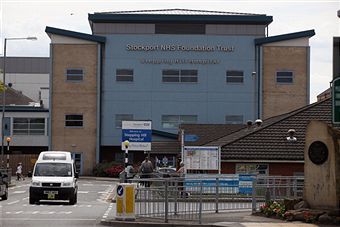 For many years, it has been Government policy to move healthcare out of hospitals and
into community units and homes, and concentrate specialist surgeries in centres of clinical excellence. This is politically contentious: former Secretary of State for Health Patricia Hewitt was
closing local maternity units, but she had to deal with the humiliation of Ivan Lewis, a minister in her department, fighting her changes in his own constituency. But the time has finally come to
break our national addiction to hospitals.
For many years, it has been Government policy to move healthcare out of hospitals and
into community units and homes, and concentrate specialist surgeries in centres of clinical excellence. This is politically contentious: former Secretary of State for Health Patricia Hewitt was
closing local maternity units, but she had to deal with the humiliation of Ivan Lewis, a minister in her department, fighting her changes in his own constituency. But the time has finally come to
break our national addiction to hospitals.
In a report published today by Reform, Professor Paul Corrigan, who was a health special advisor to Tony Blair, argues that “the old model and concept of the hospital are failing”, leading to poor standards of care in far too many bankrupt institutions. “Hospitals will have to change or disappear completely” to “provide better, safer healthcare”.
The government face two equally potent political nightmares if it sticks to its current course: either 40 hospitals could close or the government will have to foot a £5 billion bail-out by 2013. “Approximately 20 to 30 acute hospital trusts will never become Foundation Trusts” because they will not pass the financial tests, writes Professor Corrigan. “It is also conceivable that about 10 hospitals that have made that status will struggle to maintain that position over time. This means that in the next four years a minimum of 40 hospitals will have to go through a fairly radical transformation process because their current clinical and economic model is not sustainable.”
Currently, hospital closure is averted by granting interim financial support from reserves held by the Department of Health, what Professor Corrigan calls an “inefficient hospital fund”. But if the government wants to continue to protect all of England’s hospitals from closure or major remodelling, then this slush fund of around £3 billion would have to grow to as much as £8 billion. This would in turn mean that the chancellor would have to find an extra £5 billion to bailout the NHS by 2013, almost certainly causing him to miss his budget targets.
“As a proportion of the overall NHS budget, this does not seem to be unmanageable but for other Government departments, this is a significant amount of money”, says Professor Corrigan. “It is difficult to see any Chancellor simply giving the NHS that quantum of money to spend on inefficiency.”
The government’s pledge to protect hospitals will make it harder for the NHS to deliver savings and improve quality. What’s needed is a narrative of change based upon the best experience from around the world. There’s “a dire need for new business models and the disruptive innovation that creates them”. Using case studies, Corrigan shows how these models improve the quality of care, drive efficiency and are affordable. He looks at how to apply these models to the NHS.
“NHS hospitals currently try to be all things to all people and deliver every healthcare service to everyone”, the authors write. Instead, hospitals should organise treatment in high volume specialist centres to deliver safer, higher quality care. To achieve scale we will need to close down under-performing units so that activity can be concentrated in centres of excellence. By applying the lessons from assembly lines, aviation and service industries, managers can introduce a “factory” mode of production offering streamlined “valued added processes” for patients.
Nick Seddon is deputy director of the independent think-tank Reform.






Comments